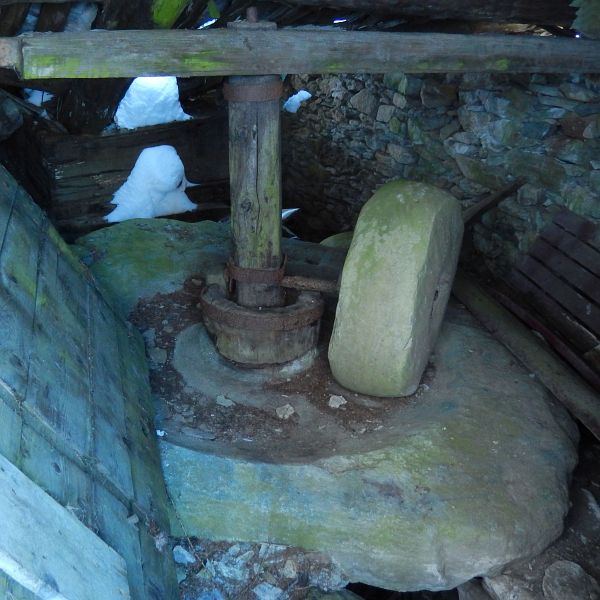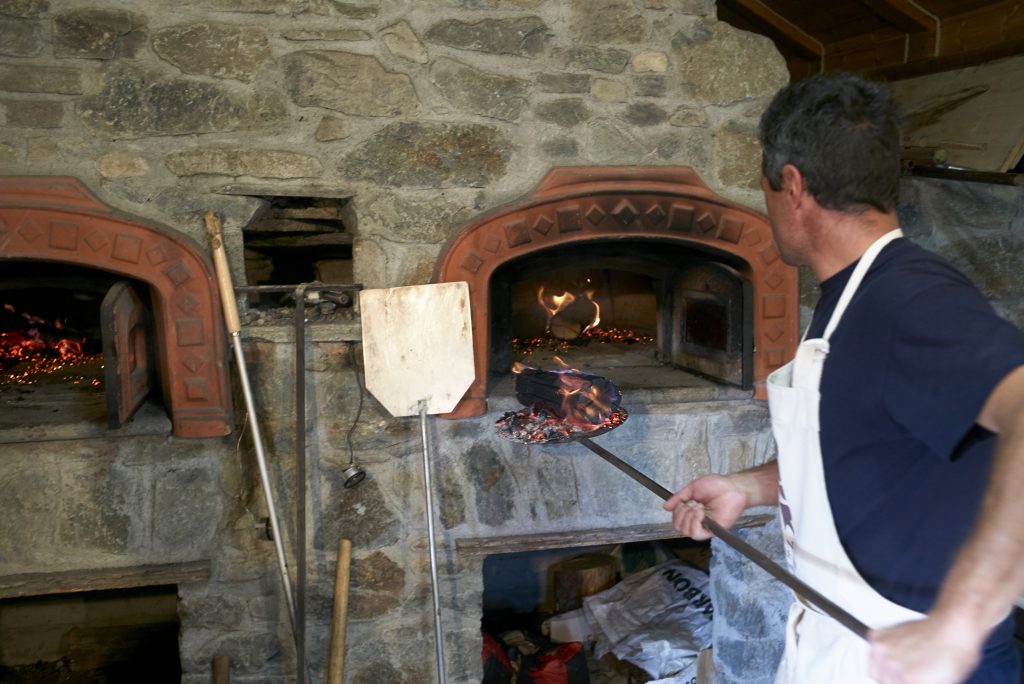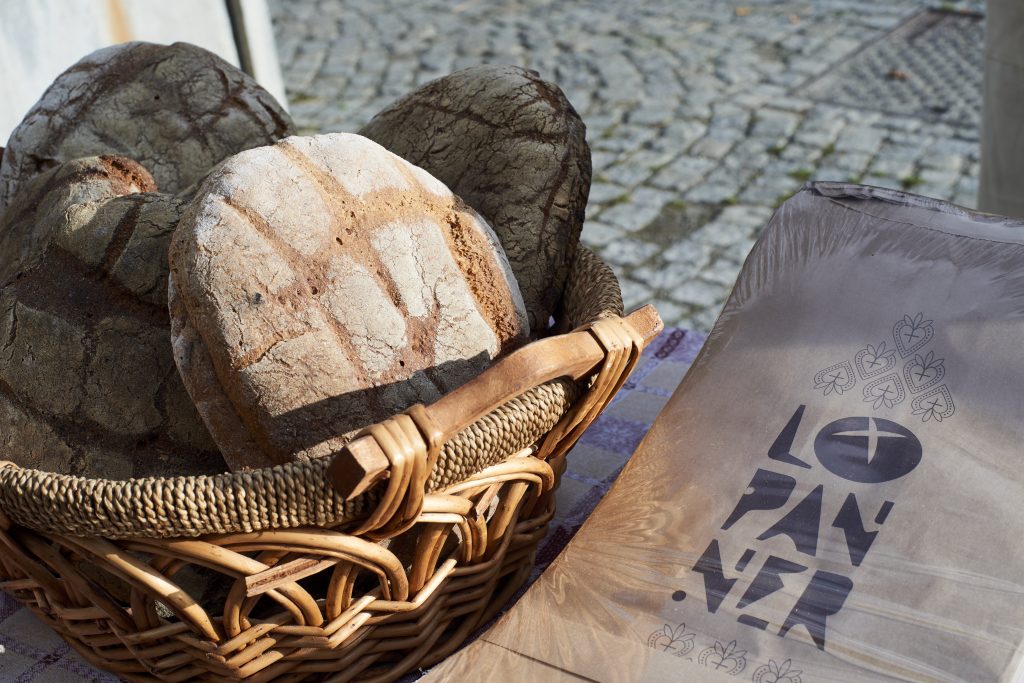The mills, the ovens, the bread
Water, since the dawn of humanity, intrinsically carries invaluable value as a binder for the countless communities that have arisen around it. Chamois stands on a plateau rich in this vital element (the area has 24 springs), drained by the Chamois and Saverou streams, tributaries to the left of the Marmore. The first inhabitants noticed this well and began to clear and populate the area with the progressive demographic expansion that followed the year 1000. They were thus able to make use of a territory well exposed to the south and south-west which, despite the altitude (about 1800 meters above sea level) and thanks to the work and talent of the farmers, lent itself to the cultivation of rye, wheat, barley and oats.
From the words of Monsignor Della Chiesa, bishop of Saluzzo, in the manuscript Relation of the present state of Piedmont of 1635: «Those of the Valle d’Osta are, in producing the fruit of the earth, extremely ingenious», amazed to note that «as the grains were sown, so you would say these were born on stones».
On the banks of the Chamois stream, the water mills necessary for the transformation of cereal production were then erected, which certainly fomented the development of the hamlets that flank them. If few ruins of the mills of La Ville and Crépin survive today, that of Corgnolaz, which has been in disuse since the 1960s, has been the subject of restoration.
 Millstone inside the Corgnolaz mill – picture: Gian Mario Navillod
Millstone inside the Corgnolaz mill – picture: Gian Mario Navillod
How did the millstones get to the mills in Chamois before the construction of the cable car?
Bread-making was also a participant in the population aggregation process, which naturally starts from the grinding of cereals fundamental for the sustenance of the communities. There are currently three community ovens in the hamlets of Suisse, La Ville and Corgnolaz. Precisely in this last hamlet, the rehabilitation of the ancient oven allows the production, during festive events, of traditional black bread: rye flour, the dominant cereal in mountain crops due to its resistance to cold and aridity, is the The master ingredient that gives this bread its dark color and rustic flavor, along with variable proportions of oats and whole wheat.
The 2023 edition of the Cross-Border Festival “Lo Pan Ner” – I Pani delle Alpi“, thanks to Lauro and Simone, awarded the Corgnolaz oven the first prize for their best creative bread and third place for bread with at least 30 % rye and sourdough.
The even more exciting 2024 edition awards the first prize to the Suisse oven and third prize to the Corgnolaz oven for their best black bread with 30% rye and compressed yeast, and the second place to the Corgnolaz oven for the best creative bread.

Corgnolaz’ oven



